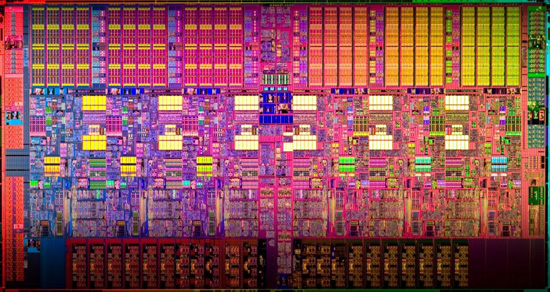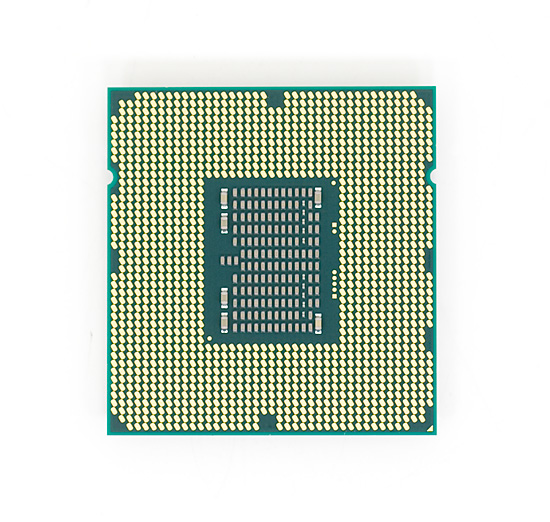The Core i7 980X Review: Intel's First 6-Core Desktop CPU
by Anand Lal Shimpi on March 11, 2010 12:00 AM EST- Posted in
- CPUs
Final Words
I have to say that Intel's Core i7 980X is the first Extreme Edition CPU that I've ever gotten excited about. In the past you used to have to choose between more cores or high clock speeds. Thanks to power gating and Gulftown's PMU, those days are over. The 980X gives you its best regardless of what you throw at it. Lightly threaded apps benefit from the larger L3 cache and heavily threaded apps take advantage of the extra cores. The performance advantage you get at the low end ranges from 0 - 7%, and on the high end with well threaded code you're looking at an extra 20 - 50% over the Core i7 975. Even more if you compare to a pedestrian processor. There are a few cases where the 980X does lose out to the Core i7 975 thanks to its higher latency L3 cache, but for the most part it's smooth sailling for the 6-core beast.

The performance advantage comes at no extra power cost either. Enabling 6 cores on a 32nm process means that the die actually got smaller and power consumption remained mostly unchanged. It really is the best of both worlds, at least for a 130W chip. It's almost Conroe-like in its ability to dominate the charts without any technical limitations. If money were no object, the Core i7 980X is clearly the best you can get.
The only problem is price, as is always the case with these Extreme Edition processors. While I don't expect 6-core CPUs to trickle down to the mainstream, if we had a version priced at ~$500 it would be an amazingly easy sell. I wonder where Intel will price the Core i7 970, allegedly also a 6-core Gulftown derivative. We'll have to wait another quarter to find out.
Even taking into account price, if you do any significant amount of compute intensive 3D work, video encoding or Excel modeling, the Core i7 980X is worth it. If you're the type of user who always buys the Extreme Edition knowing that you can get better bang for your buck further down the lineup, this time you're actually getting your money's worth. On the desktop, the next 12 months are fairly stagnant in terms of CPU performance improvements. We'll see a clock bump to the 980X at the beginning of 2011, but it'll be even longer before we get a replacement.

There is of course the higher powered alternative. You could pick up a dual-socket Xeon board and a pair of quad-core Nehalem Xeons for a bit more than a X58 + 980X. You'd end up with more cores, albeit with a higher power budget and higher price tag. The Core i7 980X is such a difficult processor to recommend. It's something I'd personally never spend the money on. But if I needed more compute in a single chip, it's really the only thing that could scratch that itch.










102 Comments
View All Comments
cactusdog - Thursday, March 11, 2010 - link
This wont be the only i7 6 core desktop CPU. Intel are being sneaky to milk the market. There will be another one or possibly 2 at mainstream prices. The cheapest Xeon gulftown is only $400 (2.26Ghz) so why would Intel ignore desktop when X58 boards will happily run a Xeon?GourdFreeMan - Thursday, March 11, 2010 - link
That strategy could just as well backfire on Intel. If you have to wait six months for the other hexacore desktop Gulftowns, you might as well forgo Gulftown entirely and wait a year to fifteen months for hexa/octocore Sandy Bridge. The new AVX instructions in Sandy Bridge are likely to have a far broader impact on performance in terms of software anyway...Triple Omega - Thursday, March 11, 2010 - link
Well I hope you're right. As right now it looks like even Sandy Bridge releasing at least 26 months after the 920 will still have only 4 cores maximum. Not much of a replacement.Also, did anyone notice they broke their own Moore's-Law rule? The 980X only has 1,6 times the transistors of it's predecessor.
DrMrLordX - Friday, March 12, 2010 - link
As I posted above:http://en.wikipedia.org/wiki/List_of_future_Intel_...">http://en.wikipedia.org/wiki/List_of_fu...rocessor...
JumpingJack - Thursday, March 11, 2010 - link
"Also, did anyone notice they broke their own Moore's-Law rule? The 980X only has 1,6 times the transistors of it's predecessor. "You have a fundamental misunderstanding of Moore's Law, this is not unexpected because it is often misquoted or misrepresented in the less technically oriented press. The proper way to state Moore's law is the transistor count will double roughly every two years for the same die size, or for the same transistor count the die size will half. Yet the best way is to simply say the transistor density (transistor/unit area) will double.
You can check the 32 nm adherence to Moore's law by following up on the technical presentations that float around the web, Intel published their IEDM 2009 32 nm stuff:
Also, did anyone notice they broke their own Moore's-Law rule? The 980X only has 1,6 times the transistors of it's predecessor.
http://download.intel.com/technology/architecture-...">http://download.intel.com/technology/ar...-silicon...
See the scaling for gate pitch or SRAM cell size slides 5 and 6, they are clearly falling right on the Moore's law path.
This is not by accident, a linear scaling factor of 0.7 when squared is 0.49 or roughly 0.5 i.e. half the area, this factor is chosen to get double the transistor density each technology node.
talonz - Thursday, March 11, 2010 - link
"Moore's Law" refers to density, not actual transistor count. Anyone can build a big chip.tterremmotto - Thursday, March 11, 2010 - link
Actually, Moore's law has nothing to do with density nor speed. It was about price.Moore's "observation" simply stated that the price per transistor halves every 18 moths. Wether that is due to density increases or process advancement is not a necessity.
Never an observation has been so misunderstood, and yet have such a fantastic side effect.
JKflipflop98 - Thursday, March 11, 2010 - link
Actually, Moore's law is all about transistor density. I know. I see it everyday in the halls, in the elevator, at my desk, in the cleanroom. . .JumpingJack - Thursday, March 11, 2010 - link
He has a small point, Moores Law is just an obseravtion of the rate of shrinkage over time, the phenomena is driven by the economy of scale.Jack
softdrinkviking - Thursday, March 11, 2010 - link
where are you getting your xeon pricing info from?all i can find from any solid source is the current xeon quad core processors which are running about $2000 on newegg at the moment.
xeons have always carried a premium for the intel dual processor support, and imho, a cheaper xeon is going to be more "enterprise" oriented and not be a real upgrade for the home x58 platform.
again, this is pure speculation, but i think we are going to be stuck with our current i7 stuff until intel decides to do a 32 nm refresh on the home line up.
basically, what i'm trying to say is that i think any xeon capable of creaming an i7 930 is going to be WAY more expensive than the 980x gulftown on display here.